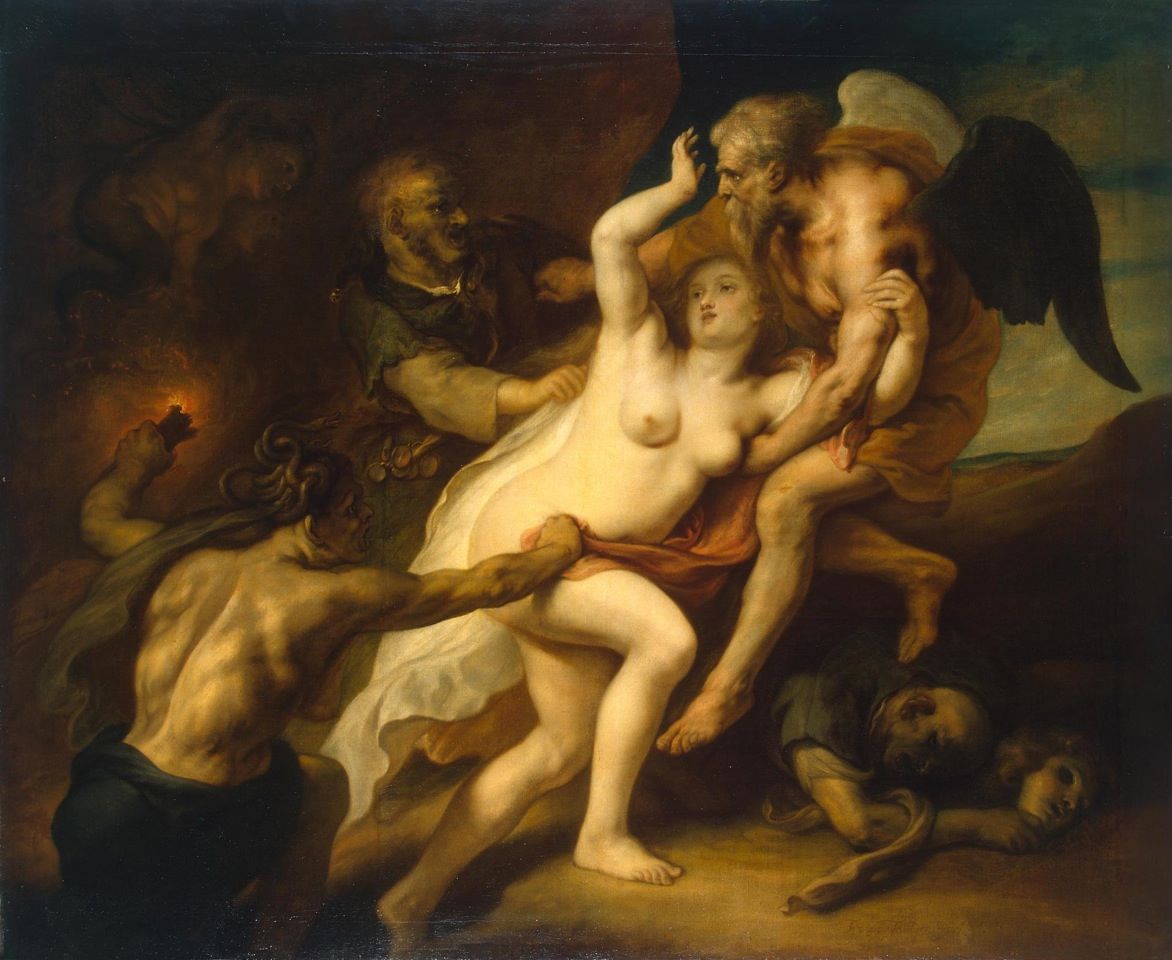
Entity truth – in discourse since the dawn of philosophy, has taken a new shape and media presence since terms as truth tellers, post-truth and fake news entered our vocabulary. As algorithms and artificial intelligence infiltrate our world, do they provoke a new understanding of truth in the digital age? Is truth a shapeshifter of our time, a hologram of reality or a liquid mutation rather than solid fact?
Veritas Filia Temporis – truth is the daughter of time. The allegory of Time revealing Truth was a popular theme in the arts of the 17th century and came from the works of the second-century Roman writer Aulus Gellius Veritas. Veritas, the goddess of truth in Roman mythology, depicted as a young, naked woman, is saved by her winged father, Time. As she emerges from the profound gloom of a cave in which she was born, the personifications of Envy and Stupidity attempt in vain to hold her back in order to prevent Truth’s victory from being free. Hypocrisy, traditionally an old woman with a mask, is depicted vanquished at Time’s feet. Rather than a glorified Truth, this is the representation of a hidden and oppressed Truth emerging from her prison, brought into the light. Thus, the sun and its light became attributes of truth.
In Roman mythology, it is time that ultimately brings truth forward, but other entities within today’s society also play significant parts. In recent history, the act of exposing political secrets for them to become evidence of truth, referred to as whistleblowing, became a turning point how we look at truth and governmental transparency. Hidden facts and the visual artifacts that stand as proof became thriving political agents of our time. While a general distrust of facts slowly proliferates across the world, the US’s presidential campaign of 2016 was the cesura that resulted in the global politics finally shifting into post-truth era.
By the end of 2016 Oxford Dictionaries declared ‘Post-truth‘ the word of the year of most cultural significance, highlighting the current dilemma about the status of truth: lost in post-factual noise. Coming back to the foretold allegory of timeless relevance, truth today can be considered to be held back again by envy, stupidity and hypocrisy. What is the future of truth and were do we go from here? Living in a digital age adds to our complex relationship with truth: digital imagery transforms truth itself, algorithms create alternate realities, artificial intelligence challenges notions of truth and blurs the line between reality and virtuality.
Hypocrisy is not the old woman with a mask anymore, she has a digital presence and wears several masks. Maybe we have to look towards the ones in society purposely bending reality and facts to understand the banality of lies: magicians and politicians. In the end, what they have in common is that they are both illusionists. Yes, our relationship with the truth is complicated. Truth can be a naked woman or a place on Google Maps. It’s omnipresent while simultaneously hidden between the atoms and pixels of our world. Truth is were light and dark are the same. How to carve truth out of the world? The Greek philosopher Plato declared the artist to be far removed from truth, contrasting with today’s understanding of art as a thriving force for political and social change. Therefore this call is addressed to artists who render their engagement with truth into the visible and comprehensible realm, driven from encouragement to deal with the topic in a metaphorical, experimental or unconventional way. Artists may want to to explore truths seemingly liquid tendencies or deal with concrete truths.
As Oscar Wilde once said: ‘Truth is rarely pure and never simple.’
Residency conditions, benefits and application details:
We expect the outcome of the residency to be exhibited during the festival at our festival location which is a unique manmade cave system inside the city‘s landmark. Build in 1943, it was originally used as an air-raid shelter. Today it houses several caves that are used as event locations. Using this unique location makes it possible for the festival audience to engage with the artwork. (Some photos here: https://www.flickr.com/photos/elevatefestival/sets/72157692327312251)
Applicants from the following disciplines are preferential: multi,- and new media + digital art (interactive, generative, installation, web art, coding, immersive environments) (Note: a digital project has to have a physical presence at the festival), sound art & music (interpretation, sound installations), light art, time based media (video).
• The following disciplines will also be considered: visual,- and fine art (photography, painting, sculpture) design (visual communication), performing arts, architecture (design, landscape architecture) and any form of cross, and transdisciplinary art.
• The proposal should engage with the topic of TRUTH and is open to the artist‘s interpretation.
• We promote artists working in a experimental manner whose work has a political dimension. Please note that this residence is within the framework of Re-Imagine Europe (re-imagine-europe.eu), thus we can only consider applicants from Europe and have to exclude artists that hold Austrian nationality. We welcome any gender and expect the applicant to speak either German or English.
Benefits: You will be featured as our Artist in Residence on our website, as well as through our Re-Imagine Europe Partners, social media and will be provided with possibilities of an artist talk, newspaper,- radio,- or TV interview. You will be part of an eclectic network of festivals across Europe, which will open up opportunities for further collaborations.
Application: Submit your proposal in the form of:
– project headline
– concept text in English or German, 300 words
– images, moving images, sketches.
– please include your biography and a link to your website (if you have one).
Applications should be sent as a PDF or weblink to berit@elevate.at until 15 October 2018. Decisions regarding the residency will be communicated to the applicants via Email. We look forward to receiving your application.
Photo: “Time Reveals the Truth. The Allegory” by Theodor van Thulden, 1657






